Everything starts someplace. All dogs no matter their size, shape, or comportment owe their parentage to a common feral precursor. Thomas Malory birthed the English novel in 1485 with Le Morte d’Arthur. Every personal computer on the planet stems from that first Altair 8800 sold through the mail in kit form in 1975. Some Hip-Hop lunatic first ignited the current ridiculous dance craze that is dabbing in Atlanta some time within the past decade (Look at my name. Yes, I get asked about it all the time.) Similarly, most all the world’s modern combat rifles arose from but four precursors. There are certainly others, but these have had staying power.
Mechanical systems like small arms evolve in response to myriad forces both industrial and martial. Somebody has an idea that seems to work, and that idea is tweaked, adjusted, and improved over time until it becomes something better, more reliable, and more efficient. The astute student of modern small arms, however, can generally tease out the origins of a mechanism with a little study.
HK: The Teutonic Titan
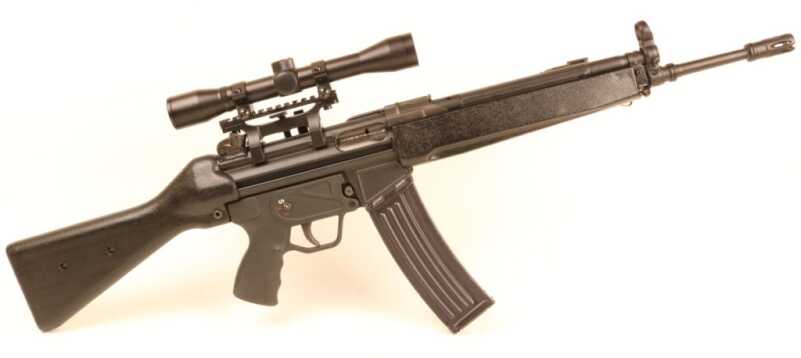
The HK33 is the 5.56mm version of the 7.62mm G3. Heavy by modern standards yet imminently rugged, the HK33 is fairly typical of the family of roller-locked assault rifles.
The roller-locked action of the HK33 is the least prevalent system we will discuss this day. Spawned from the prototype STG45 that arose from the ashes of the Second World War, this roller-locked recoil-driven action defined a generation of HK rifles and submachine guns. The concept arose from the MG42 belt-fed machinegun.
The MG42 has been extolled as the best machinegun of World War 2. Comprised of pressed steel components that kept it cheap and sporting a blistering rate of fire, the MG42 was indeed a formidable combat tool. The beating heart of the MG42 was its novel roller-locked recoil-driven action.
Dr. Werner Gruner was the chief engineer behind the MG42, and he had never before built a gun. His company produced pressed-steel lanterns prior to his winning the design competition to replace the previous MG34. It was likely his subsequent lack of preconceptions that spawned such an innovative mechanism.
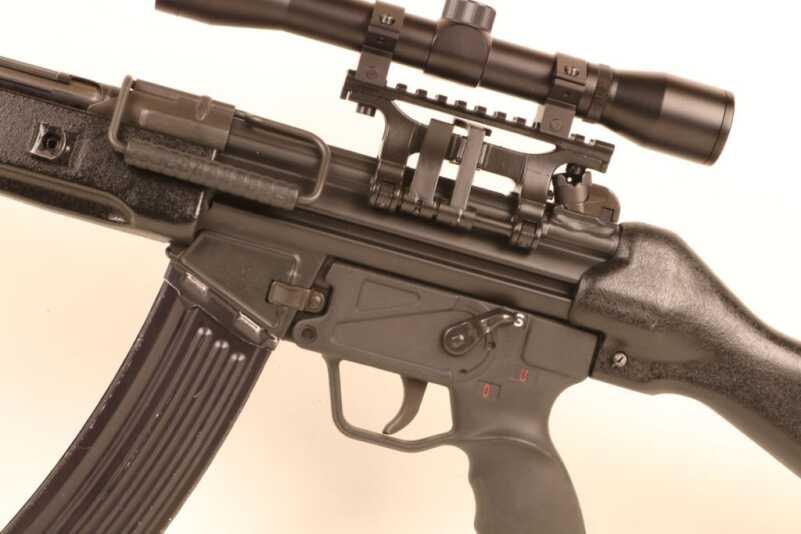
Roller-locked HK rifles and submachine guns all sport pressed steel receivers that can be economically produced in large quantities.
The basic action consists of a pair of roller bearings that cam into recesses in the breech end of the gun’s barrel. These bearings retard the movement of the bolt long enough to allow chamber pressures to drop to a safe level. As this system operates independent of gas pressure, the resulting weapon does not depend upon barrel length for reliable operation.
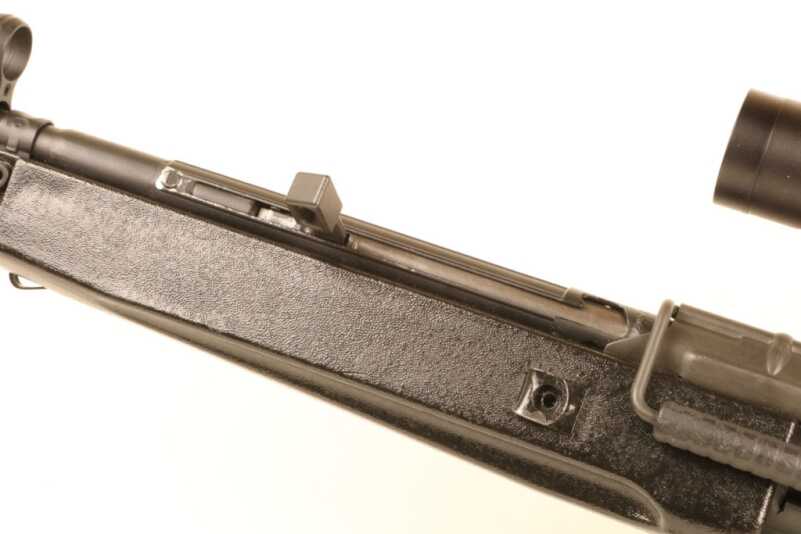
The bolt on the HK33 does not lock to the rear after the last round is fired, and this is a pain. However, you do get some cool points for slapping the charging handle down over a fresh magazine.
The STG45 was an experimental 7.92x33mm rifle developed by Mauser for the Wehrmacht at the very end of the war. This design was taken to Spain where it became the post-war CETME battle rifle. German engineers subsequently brought the concept back to Germany where it drove the G3, HK33, and MP5-families of guns.
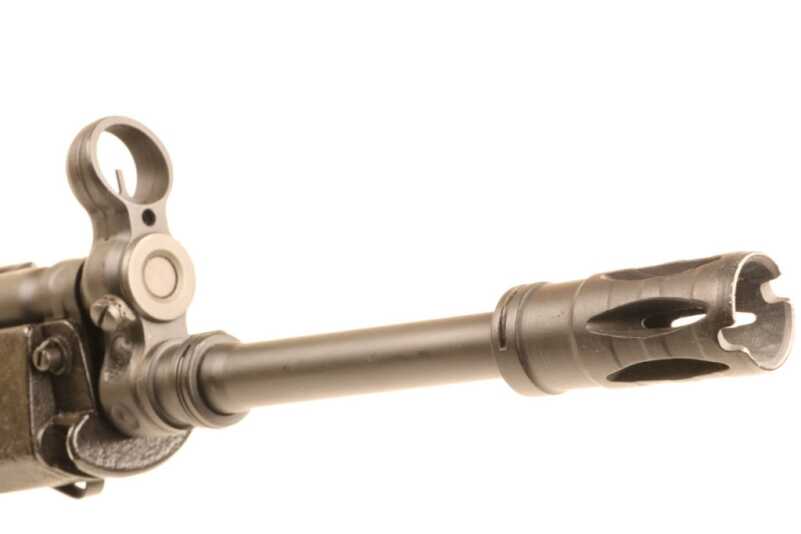
HK flash suppressors sport a groove in the end that serves as a wire cutter. Center the offending wire in the groove, lean against it to bring the wire taught, and fire a round to cut it cleanly. This simple device works on concertina and commo wire as well as the standard barbed sort.
These weapons are dichotomous designs in that they orbit around inexpensive pressed steel receivers yet incorporate precision machined components in their bolts and recoil mechanisms. While G3’s are still commonly found in your more poorly funded war zones, by and large, the roller-locked design has been supplanted by simpler stuff these days. Roller-locked guns still remain in production in several countries, however.

Though the roller-locked action is a bit dated this deep into the Information Age, the HK33 remains an effective combat weapon.
Comrade Kalashnikov’s Meat Grinder
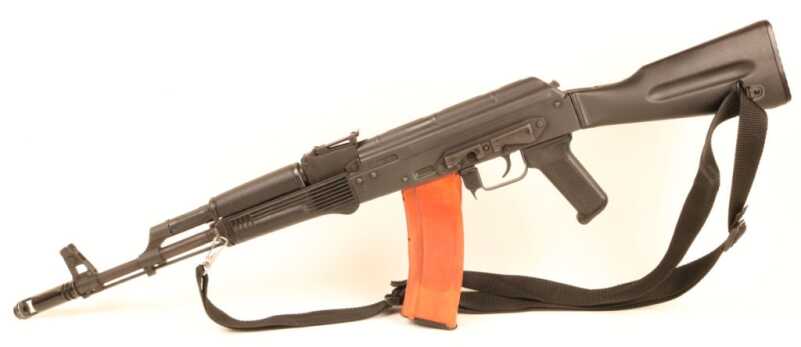
The AK74 was an evolutionary advancement of the original post-WW2 Kalashnikov combat rifle. Firing a radical small caliber 5.45x39mm round, the AK74 still serves as the standard-issue Infantry weapon for Russian forces.
As the story goes Mikhail Timofeyevich Kalashnikov dreamt up the AK47 action while recuperating from wounds he received fighting the Germans as a T34 tank crewman at the Battle of Bryansk during World War 2. The tale has all the obligate components of an epic Communist political tome. Kalashnikov was a peasant, the 17th of 19 children, and he purportedly designed the gun amidst a veritable fit of patriotic fervor. He purportedly wished his eponymous assault rifle to stand in the vanguard defending Mother Russia against the resplendent ills of fascism.
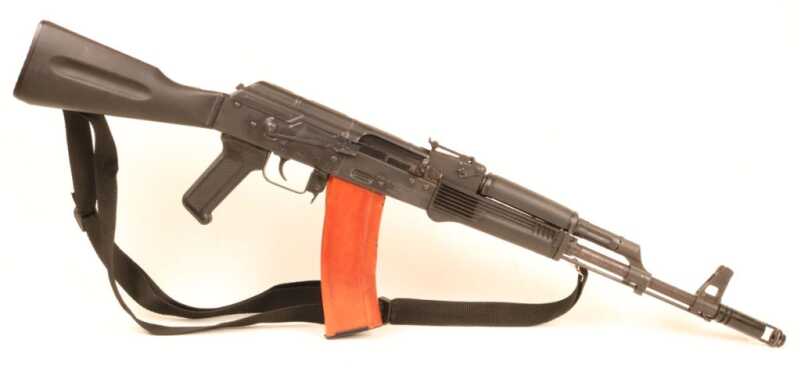
The ranch gate safety selector on the AK74 has been justifiably maligned. Hard to reach and tough to manipulate quietly, it is nonetheless effective.
The reality was that the Kalashnikov clan suffered mightily during Stalin’s bloody purges, and there were likely other influences that bore on the gun besides the informal etchings of a recovering Soviet tanker. Regardless, the basic AK action has been universally extolled as the most popular military weapon in human history. More than 100 million copies have rolled off the lines in the last seventy-five years, and the world produces another million of these rugged guns annually.
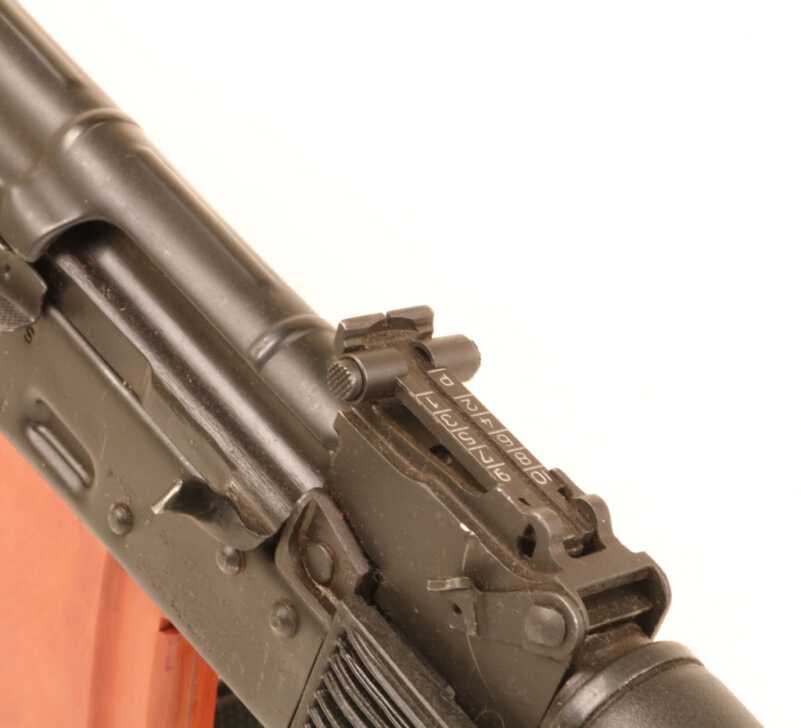
The ramp adjustable rear sight on the AK74 is fairly dated. Some but not all AK74 rifles have their charging handles canted up for easier access.
AKs are ubiquitous fixtures across the planet, and the price of a Kalashnikov rifle is a reliable indicator of how nice a place is to live. If full auto AKs are expensive and tough to find then settle down, buy a home, and join the local Rotary. If you can trade into one for a live chicken and a dog-eared copy of Hustler magazine then you should leave. The Kalashnikov is so simple a child can use it and many have.
In many ways, the AK rifle reflects the ethos of its designer. Rugged, over-designed, and simple, the Kalashnikov rifle is the small arms equivalent of the basic Russian peasant. The gun has a singular mission that it performs with monotonous reliability. It is not elegant, refined, or pretty, but it is inimitably functional.
The long-stroke gas piston system that drives the AK involves a lot of reciprocating mass. The overbuilt bolt carrier assembly has energy to burn and will always be the last to fail anyplace two or more assault rifles are competing for mechanical supremacy. The resulting weapon is not the most accurate in the arms room, but it will reliably go bang every time you squeeze the trigger.
Those first AK47’s fired the short but heavy 7.62x39mm M43 round originally designed for the RPD light machinegun. As the name implies, the AK74 was developed in 1974 and fed a radical 5.45x39mm cartridge with an unnaturally long 53-grain bullet. This variant first saw action in Afghanistan in 1979. The American CIA purportedly paid $5000 cash for the first captured example to find its way outside that wretched country. The long slender 5.45x39mm round has always been a personal favorite. This basic chassis went on to become the AK100-series guns in production today.
Gene Stoner—The Godfather of Guns
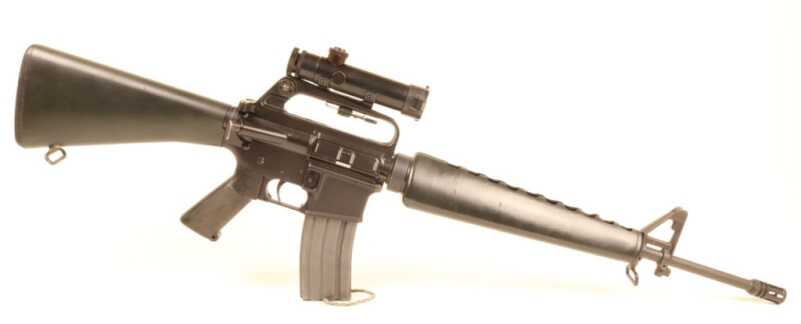
The M16A1 was the definitive variant of the AR15 used during the Vietnam War. Lightweight and maneuverable, the M16’s teething troubles have been well documented.
In 1956 a former Marine named Gene Stoner and a few others strived to incorporate aviation technology into the burgeoning world of modern small arms. The radical new AR10 rifle they designed orbited around aircraft aluminum receivers and a novel but simple direct gas impingement operating system. The action drew inspiration from a little-known turn-of-the-century French rifle called the Rossignol B1.
The concept began with the AR10, a 7.62x51mm battle rifle submitted for the US Army’s rifle trials held in 1956. While the AR10 ultimately lost out to the T44 that went on to become the M14, the design was subsequently miniaturized to accept the .223 Remington cartridge. The .223 Remington was itself also a Gene Stoner creation that pushed a 55-grain .22-caliber bullet to around 3,000 feet per second. While this tiny little round represented a quantum leap in military small arms technology, the circuitous route it followed was labyrinthine.
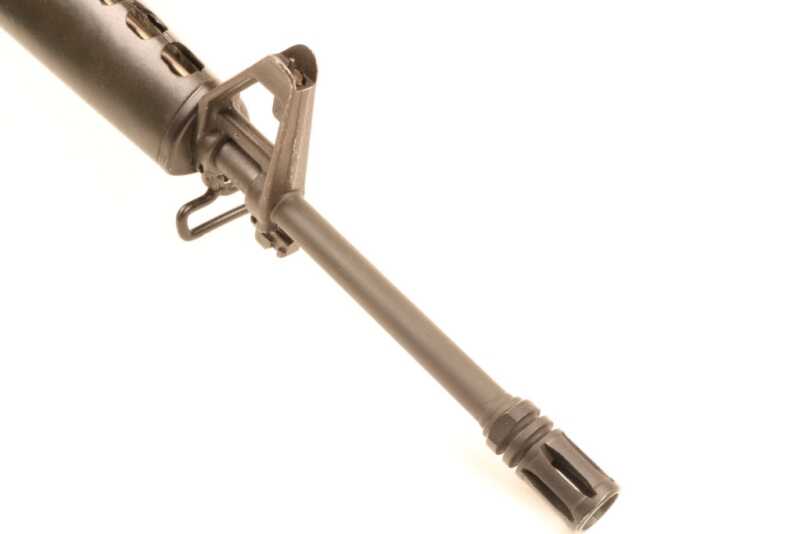
The direct gas impingement system of the M16 keeps the forend of the rifle uncluttered. The closed birdcage flash suppressor replaced the earlier open sort as the previous version caught badly on brush and vines.
The AR10 became the small-caliber AR15 that was ultimately championed by Air Force General Curtis LeMay, the commander of strategic bombing forces in the Pacific during World War 2. With LeMay’s patronage, the AR15 morphed into the M16 and was adopted by the US Air Force in the early 1960’s and subsequently by Army Special Forces soldiers in Vietnam. The gun was then foisted upon combat troops throughout this combat theater, and its teething problems became patently manifest. The bugs were eventually worked out, and the M16 became the longest-serving military rifle in American history. Our boys and girls serving downrange carry Information Age versions of this rifle even today. The details are much more convoluted, but this captures the gist of the tale.
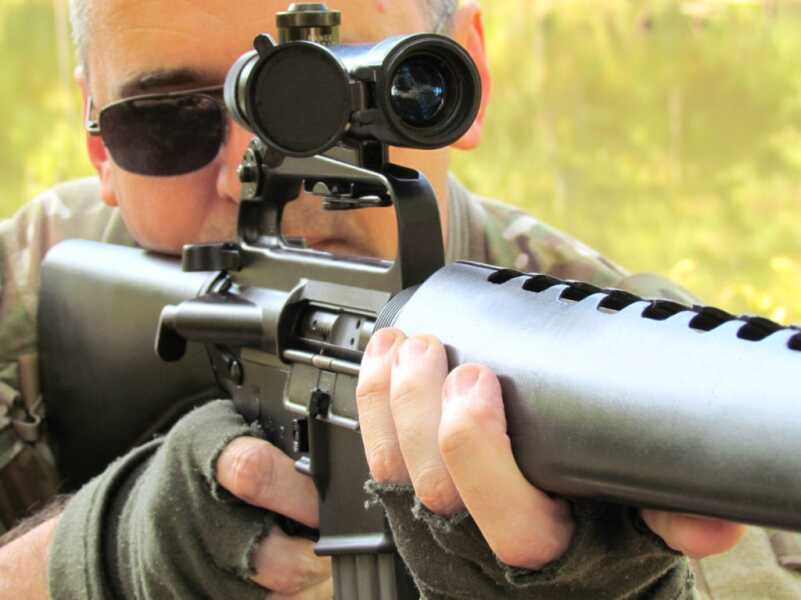
The original M16A1 was a remarkably lithe combat weapon before we started hanging so much crap on it.
The M16/M4 family of rifles is indeed lightweight and controllable. Typically feeding from a thirty-round detachable box magazine, the M4 is accurate and effective out to about half a kilometer. The direct gas impingement system demands regular maintenance for reliable operation, but it will no doubt be serving with American forces downrange for the foreseeable future.
Gene’s Ambitious Upstart
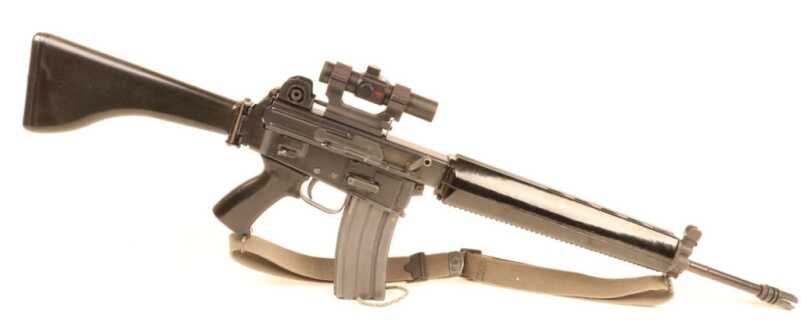
The AR18 was the next generation evolutionary development of the M16. Easier to produce and running a cleaner, cooler, more reliable gas piston action, the AR18 spawned several other advanced combat rifles currently in common use.
In 1963 Gene Stoner and Arthur Miller began work on the next generation replacement for the AR15. Rights to that rifle had passed on, and it was time to work up a follow-on weapon that was simpler to manufacture. While the basic AR rifle was indeed revolutionary, it required advanced industrial capabilities to produce. Their subsequent 7.62x51mm AR16 morphed into the 5.56mm AR18 after Stoner left the project and went into production in 1969.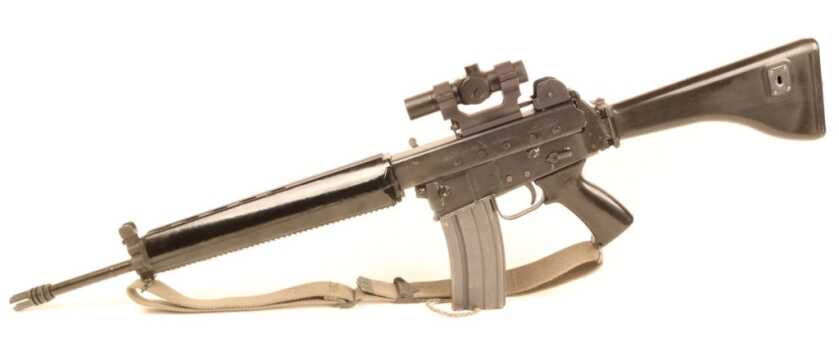
The AR18 was a more conventional design than the esteemed Space Age black rifle that preceded it. Gone were the forged aluminum receivers in favor of stamped steel components more akin to those of the HK93 or AK74. Semi-skilled workers could stamp out these parts en masse on industrial presses. The direct gas impingement system was exchanged for a more conventional gas piston design as well.
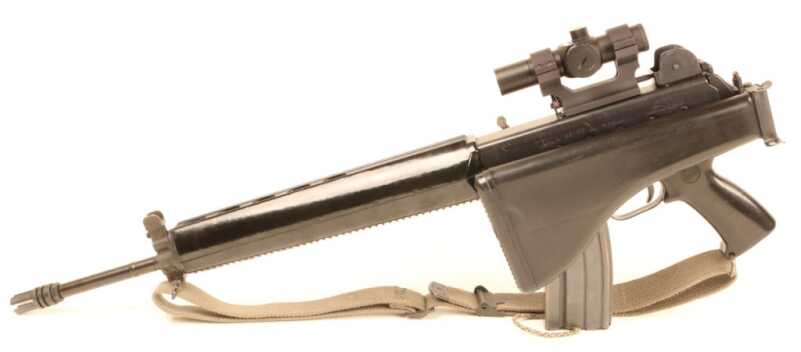
The AR18 has its recoil spring in the forearm with the gas piston, so the buttstock is free to pivot to the side.
The production run of the AR18 spanned from 1969 until 1985. These rifles were produced in the US, the UK, and Japan and saw very limited combat action, mostly in Lebanon and Northern Ireland. Though the AR18 didn’t itself make much of a splash, the guns that it inspired went on to dominate the marketplace.
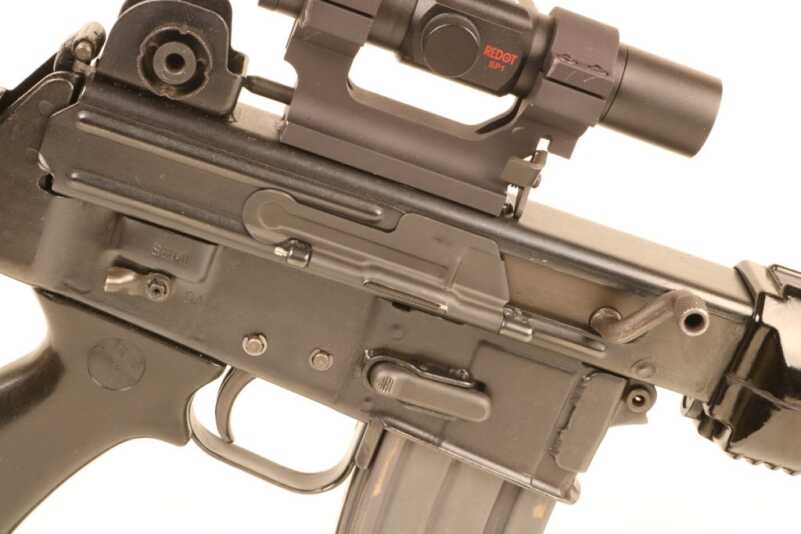
The AR18 is designed around an upper and lower receiver constructed of pressed steel stampings. It is an easier weapon to produce than the M16 as a result.
The basic AR18 action was adapted to the Steyr AUG, the HK416, and the G36 as well as several lesser designs. These rifles currently serve in various guises in the hands of the military and LE operators around the globe. The AUG has seen widespread service with the Australian military. The HK416 arms America’s Tier 1 special operators, while the M27 Infantry Automatic Rifle is a full-length variant of the HK416 that serves with distinction with US Marine Corps riflemen today. The G36 has been the standard issue service rifle in the German Bundeswehr since 1997.
The AR18 sports a rigid charging handle that reciprocates with the bolt. The recoil spring on the gun is incorporated into the gas system so the buttstock is free to fold to the side. The gas piston action of the AR18 runs much cleaner and cooler than does that of the AR15.

The in-line design of the AR18 very effectively negates muzzle rise as can be seen by this long string of fire.
Trigger Time
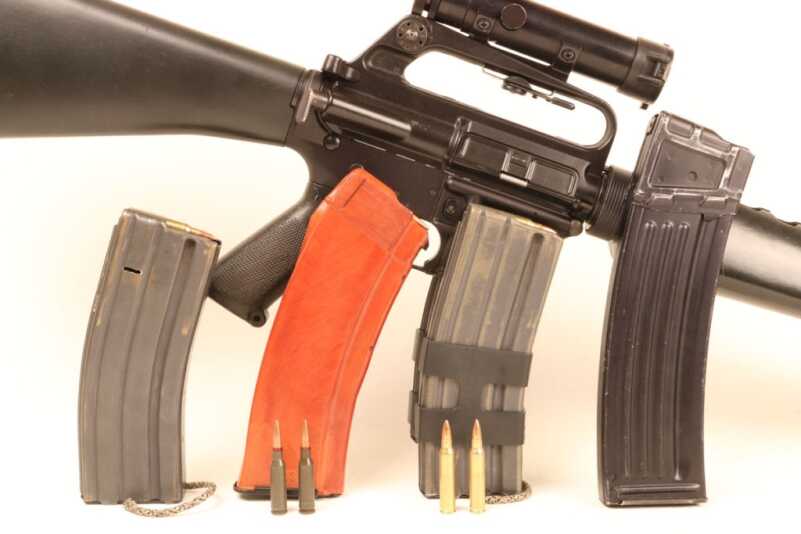
Magazines for these four weapons are optimized for their respective actions. From left to right are the AR18, the AK74, the M16, and the HK33. The AR18 mag differs from that of the M16 solely by the small slot cut in the side for the magazine catch.
The HK93 is a heavy and rugged design. The manual of arms is a bit more cumbersome than is that of our other contenders, but you win some cool points during magazine changes. The bolt does not lock back on the last round fired, so one must manually lock the bolt to the rear, replace the magazine, and then slap the charging handle to drop the bolt. Recoil is pleasant given the gun’s mass, and the fire controls are easily accessible by right-handed firers.
The AK74 is not designed for real humans, but it runs well enough regardless. The right-sided ranch gate safety has been justifiably maligned, and the magazines must be rocked into position. However, this does allow for easy seating of a full magazine with the bolt closed. The bolt does not lock back after the last round is fired, and the sights were state of the art back in 1945.
The ergonomics of the AR15 set the standard by which all others are judged. Everything is readily accessible, and magazine changes are fast and easy. The T-shaped charging handle is perhaps suboptimal, but, so long as everything goes well, you shouldn’t have to fart with it once the bullets start flying. No other gun in the world is so modular or adaptable as the current iteration of the M4.
The AR18 is a superb lightweight fighting rifle. The charging handle sports a handy crook, so it is fairly easy to access with the left hand if you cant the rifle just a bit. The weapon shoots fine with the stock folded, but no sensible shooter would ever run it thus. The gun is almost as light as an AR15 and much more easily maintained.
Each of the rifles we reviewed for this project has been supplanted by something newer, fancier, and better. However, the designs they each subsequently spawned soldier on in the hands of both Good Guys and Bad across the globe today. Within these four basic rifles we see the seeds that ultimately grew to become most of the world’s modern small arms.
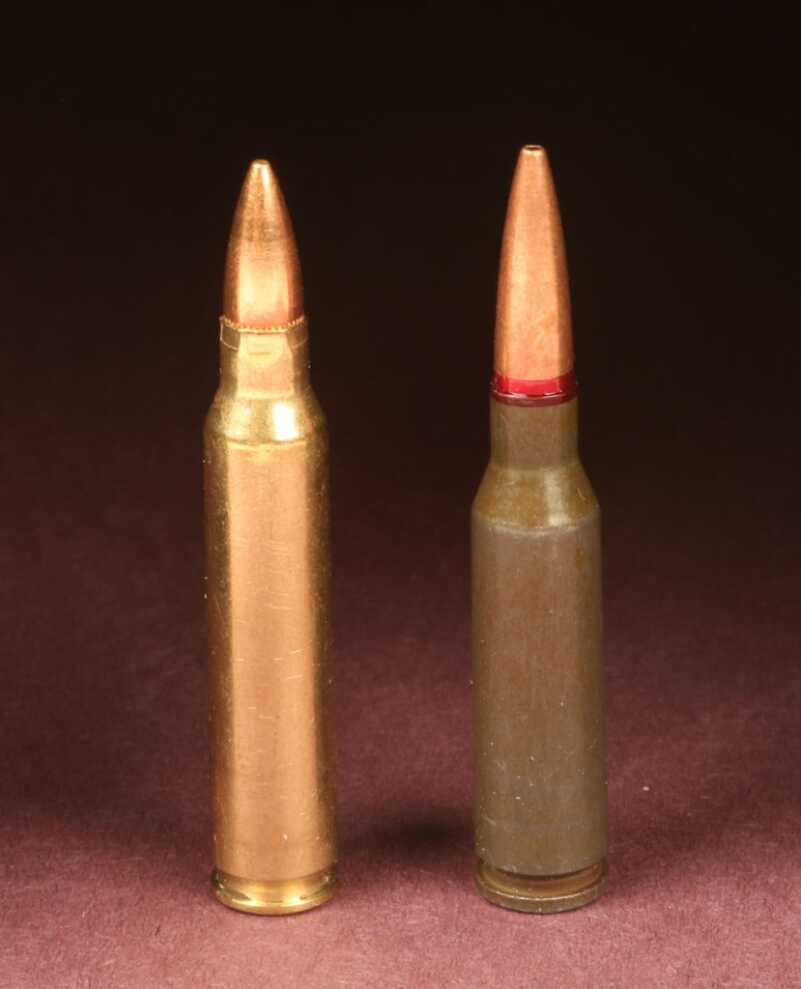
The 5.56x45mm round on the left was a Gene Stoner creation and drives most of the Free World’s small arms. The 5.45x39mm round on the right pushes a long thin bullet that is remarkably effective downrange.
Technical Specifications
HK93 AK74 M16A1 AR18
Caliber 5.56×45 5.45×39 5.56×45 5.56×45
Weight 8.05lb 6.8lb 6.37lb 6.7lb
Length 36.2 in 37.1 in 39.5 in 38 in
Barrel Length 15.4 in 16.3 in 20 in 18.25 in
Rate of Fire 750rpm 650rpm 750rpm 750rpm
Mag Capacity 25/30/40 30/45 20/30 20/30/40

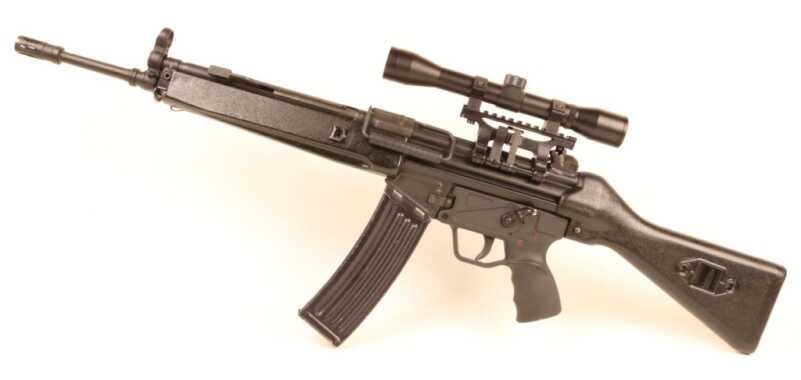
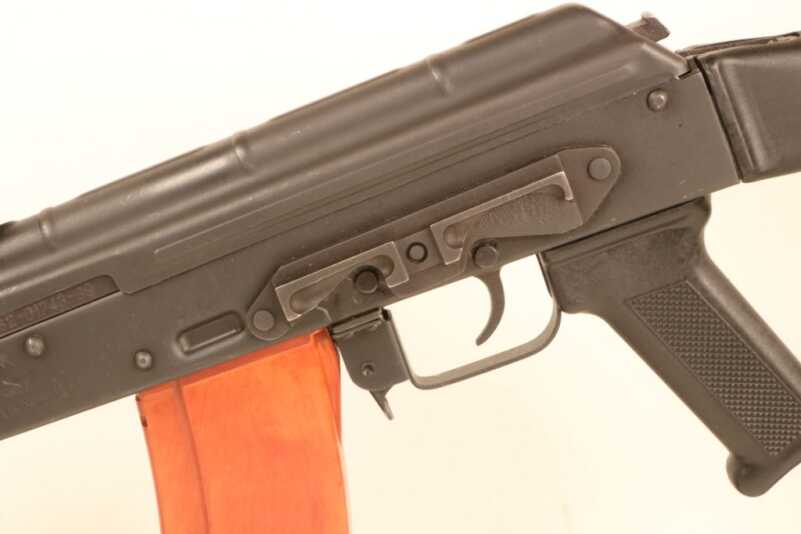
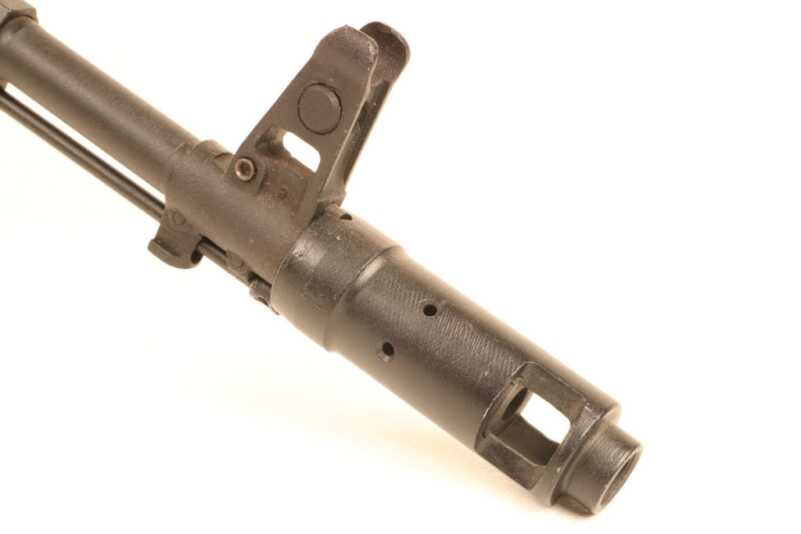
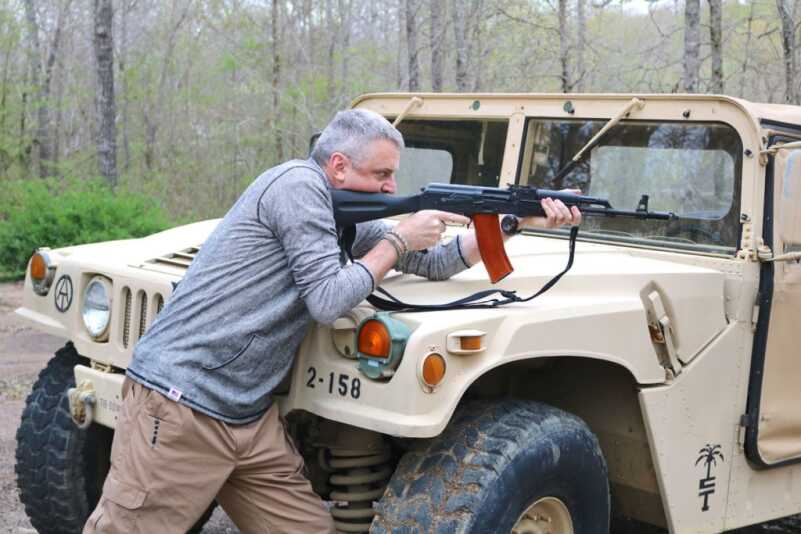
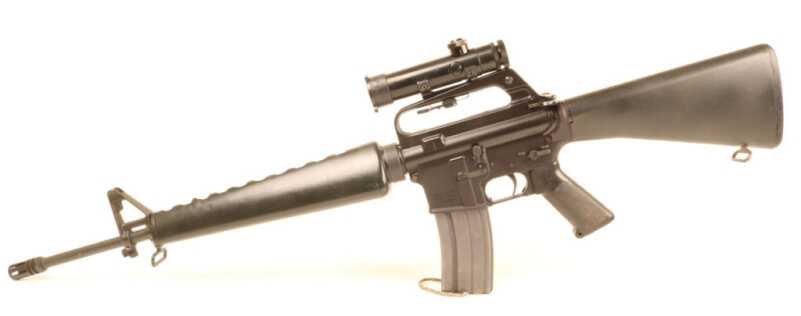
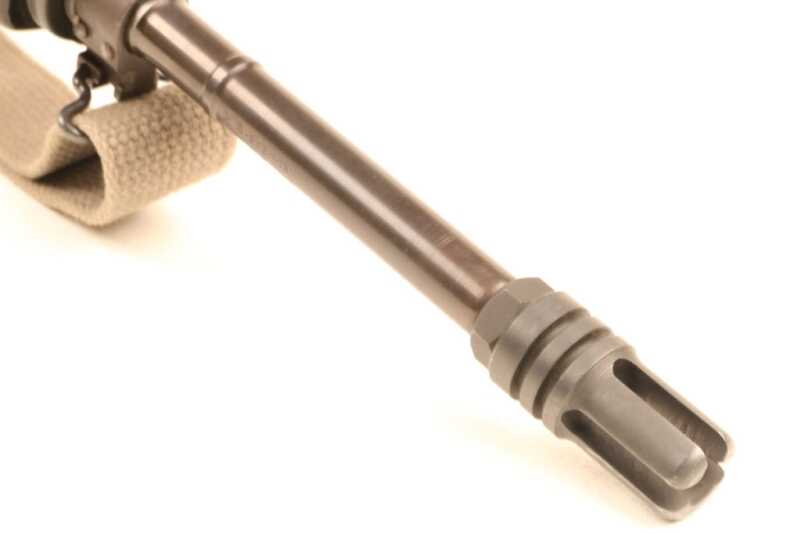

Finally I found a great post with interesting topic. I read every points of this post that is really so enjoyable and I have bookmark your site for get back again here.
I think there are many other people who are interested in them just like me! How long does it take to complete this article? I have read through other blogs, but they are cumbersome and confusing. I hope you continue to have such quality articles to share!
I feel it is interesting, I hope you continue to have good posts like this to share.
I don’t know much about these weapon’s histories (except about the Kalashnikov myth) but I do have a more than passing familiarity with some of the weapons involved.
I owned an HK93 for many years. It’s trigger was heavy as a semi-truck’s clutch and had a gritty, sloppy break. That roller mechanism may have been great in a machine gun but in a rifle was a glorious PITA to disassemble and a bigger one to re-assemble. Due to the trigger, accuracy was lousy at best.
As for the M16A1, (I am referring to this variant specifically) a bigger piece of canid feces I have never beheld. I suffered that thing for 7 years in the army. At Ft. Jackson SC, (known as “Little Egypt”) they constantly jammed from the dust and grit prevalent everywhere there. Going on a rifle range, you would open the dust cover and an NCO would literally pour LSA into the actions in a forlorn hope of preventing malfunctions. THAT rifle would never have served in the ‘sandbox.’
It didn’t work a whole lot better in the freezing mud of Germany either. I doubt it would have been any good for anything at all in any significant remove from the jungle environment it was made for.
The AK47- I LOVE it! Accurate it isn’t, utterly reliable it is and between the two, I’ll take reliable every time!
The AK74- Yes the government DID have a reward out for any of these rifles turned in. SOF* magazine personnel brought back three along with some ammo for it. The rounds caused such devastating wounds it was thought the Soviets were using exploding ammo. It turned out that the rounds were simply very unstable and tumbled badly upon impact. As for the rifles brought back by SOF, two were handed over to the government along with ammo and the reward was waived. They were not thanked.
*SOF- Soldier Of Fortune
+ 1 on the likely German contribution to the AK. This is covered in nice detail (with images) by Ian McCollum @ forgottenweapons.com: AK and StG – Kissing Cousins.
In addition to mauser6863 superb comment.
There is one additional proof that the communists stole the STG from the Germans is the STG was in production in 1942 while the Kalashnikov is an AK 47, five years later.
The Waffen SS units at the end of the war in companies deployed east had at least two of these STG’s in full auto, with scope in every company of around 50 boys. The remainder had the Model 43 semi automatic which was another German combat perfection.
If I could add one more historical correction in this, not related to the STG’s, but to the other German masterpiece, the 98k Mauser, we hear the same ignorance from writers as the above article that the 98 was the best bolt action ever built, and due to the slop of the Mauser it was always reliable. The Landsers on the Eastern Front discovered in the 50 degrees centigrade below zero that the German precision milling was too fine, as the Mausers froze up from contraction. The loose fitting Nagants of poor Russian tolerances actually worked better. In fact, the German Marksmen in the east, did not have sniper rifles for the first 3 years of the war, and were forced to use confiscated Soviet Nagants. The German Marksmen as they did not want to be called snipers as they were of a more refined military scout hunter compared to long range sniping, actually were armed with Soviet captured weapons and were most effective.
Also the STG cartridge was the father of the communist 7.62 x 39 mm.
German precision is the best, but even in the Mauser it got in the way of Arctic cold fighting
The evolution of the Stoner family is, at heart, its rotating bolt and I would argue that the M95 Steyr with its straight pull rotating bolt is the beginning of all of the other developments. The direct gas impingement system, while workable, is terribly flawed and maintenance sensitive, which brings its HK improvement forward that traces its initiation to many early 20th century designs from the Hotchkiss Machine gun and other independent uses of the gas piston, which is far superior to the original design.
The Kalashnikov is a simplified copy of the STG44 and while more refined and cheaper to produce owes ALL of its heritage to the work of the Germans, as does the AR 180, Galil, Valmet, and other refined copies.
You are wrong about Thomas Malory birthed the English novel in 1485 with
Le Morte d’Arthur.
The first English novel about King Arthur was birthed by Geoffrey of Monmouth
1095 – c. 1155 in The History of the Kings of Britain .
The “Father” of all these rifles and the layout of all subsequent rifles is the German MP44 and later STG45(M) which lead to the H&K roller lock system to be created. The STG45(M) design, also known as the Gerät 06(h). The H&K design of delayed roller lock, developed by Mauser and their team which included; Hugo Schmeisser, Wilhelm Stähle and Ludwig Vorgrimler and mathematician Dr. Karl Meyer.
The influence of the Russian AK-47 rifle, was directly traced to the work of the captured German engineers who all worked for Kalashnikov, which included Hugo Schmeisser, who was a firearms genius and was a true equal to men like John Browning at the time.
If you believe the BIG LIE that a former tank mechanic, with no formal engineering training, who’s designs were failures, developed the AK-47 rifle, I have a bridge I’d like to sell you. The captured German team, working for their political supervisor, Mikhail Kalashnikov were the true inventors and developers of the AK-47. Evidence is everywhere if you look, the most obvious being the gun’s original stamped receiver, which the Germans developed and the Russian’s were incapable of actually producing, having to revert to milling the receivers from bar stock. Eventually they figured it out with the AKM around 1960.
Kalashnikov was an “Empty Suit” which is why all subsequent designs from his Bureau are merely derivatives of the original AK47. Kalashnikov was not an engineer, a designer or a genius, he was an administrator who put his name on the final product. There was zero chance that a German(s) was going to be given any credit for a new Russian weapon.
So the AK47 and the H&K roller lock system both sprung from German WW2 work.
On the other side of the world, Eugene Stoner produced his AR10 design in the new 7.62×51 cartridge. This was a military and commercial failure. James Sullivan and Bob Fremont were tasked with scaling down the AR10 into the AR15, although this was Stoner’s design, he had little to do with the redesign and was not personally a fan of the small 5.56×45 cartridge.
Stoner’s multi-lug bolt design was a copy of the Melvin Johnson rotating bolt and Johnson helped Stoner with this aspect of the AR10 design. Stoner’s unique gas system invention, which used the rear of the bolt for the gas piston, was unlike any other contemporary direct gas impingement design.
James Sullivan is largely responsible for the Ultimax 100 light machine gun. He also contributed to the Ruger M77 rifle, Stoner 63 system, Ruger Mini-14 rifles and the new Surefire 60 and 100 round magazines. James Sullivan’s Constant Recoil System is also incorporated into the new Knight’s Armament Light Assault Machine Gun, which appears to be largely based on the Stoner 63 system, which can replace the belt fed M249 and weighs less than a M1 Garand empty!!!
Eugene Stoner’s other design, the AR-16 and later AR-18/180 have become the basis of many rifles with its improved derivative of the Russian SVT-40 gas piston system. As you pointed out, the German G36 and the H&K 416/417, these are copies of the AR18/180 design with the H&K 416 being a fusion of the M-16 and AR-18.
Hugo Schmeisser, Eugene Stoner, James Sullivan and Melvin Johnson (and many others) are really the true fathers of today’s modern rifles. The LIAR and the FRAUD, Mikhail Kalashnikov has no place on this list and the sooner he is forgotten the better.
Thanks for that info. That’s like finding out that an old, fast bastard really isn’t responsible for the gifts under your tree. You knew the story seemed odd, but who argues with tradition.
i agree. i met mr k back then and from what i can tell and what i saw in russia back then its a hard to bellive story about that invention. especially with the fact of all the really well known work of the captured germans that where transported to russia. that fact was hidden for a long time to misled the people.
Great history lesson. And you’re so right when you stated that, “The original M16A1 was a remarkably lithe combat weapon before we started hanging so much crap on it.”
Very nice article, well written and interesting!
Hey Sugar Bear!
Great history lesson. Good to see you still discussing our weapons. It’s been a long time since Blackhawk down and Hangar 1.